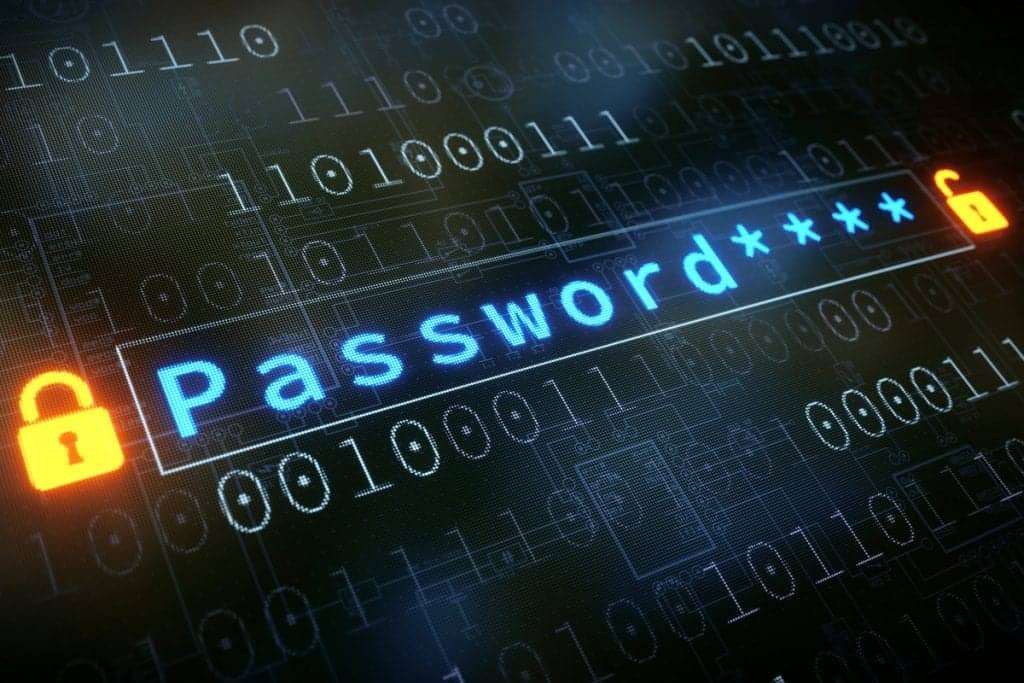When a cyber attack hits, a clear plan is your best defense. These are the essential phases every business should follow to respond, recover, and strengthen security:
- Act fast but don’t panic
- Notify the relevant people
- Recovery: contain, clean, and rebuild
- Testing and restoring operations safely
- Post-attack review and resilience building
A cybersecurity incident can devastate your organization within hours, potentially leading to data theft, operational shutdown, financial losses, and severe reputation damage. The stress of watching your business systems become compromised while sensitive information falls into unauthorized hands creates a genuine crisis that demands an immediate, professional response.
We provide comprehensive cybersecurity solutions designed not only to help during an attack but to prevent breaches before they occur, ensuring your business stays protected against evolving cyber threats.
Our cybersecurity solutions team is available 24/7 to help protect your business from devastating cyber attacks. Find out how we can help you today.
What is a cyberattack, and why fast response matters
A cyberattack occurs when malicious actors gain unauthorized access to your systems, network, or data with the intent to steal, damage, or disrupt operations. Time becomes your most valuable asset during these incidents because attackers exploit confusion and delayed responses to maximize their impact, making a structured response plan vital for minimizing harm.
💡 According to the average cost of a data breach, breaches identified and contained within 200 days averaged $3.93 million, whereas those extending beyond 200 days cost approximately $4.95 million. This highlights why immediate detection and response protocols are vital for protecting your organization.
Recognize the signs of a cyber breach
Understanding the early warning signals that indicate your business may be under attack helps you respond before significant damage occurs. These indicators often appear subtle at first, but quickly escalate if left unaddressed.
Common signs of a cybersecurity incident include:
- Unusual system or network activity, such as unexpected traffic spikes, system sluggishness, or applications running slower than normal. These performance issues often signal that malicious software is consuming resources or that an attacker is actively exploring your infrastructure.
- Multiple failed login attempts or login activity at odd hours, particularly from unfamiliar locations or IP addresses. Hackers frequently attempt to evade detection by accessing accounts during off-hours when monitoring may be reduced.
- Disabled security tools or altered system settings that your IT team didn’t authorize, indicating someone with unauthorized access is attempting to remove protective barriers. This is one of the clearest signals that your network has been compromised.
- Strange emails, unfamiliar software installations, or inaccessible files, especially if files appear encrypted or renamed with unusual extensions. Ransomware attacks often announce themselves through these obvious changes to your data.
⚖️ For comprehensive cybersecurity support, explore CISA’s Free Cybersecurity Services and Tools, a curated list of no-cost resources designed to help organizations prevent, detect, and respond to cyber threats
Need help with a cyber attack? Get expert support fast, contact us online.
What to do in the event of a cyber attack
When you confirm or suspect your organization is experiencing a cyber attack, following a systematic approach helps you mitigate damage while preserving evidence needed for recovery and potential legal proceedings. Having a detailed cyber incident response plan in place before an attack occurs significantly improves your ability to respond effectively and minimize business disruption.
1. Act fast but don’t panic
The initial moments of discovering a breach determine how effectively you can contain the threat and protect your business from further compromise. Taking swift but measured action prevents the situation from escalating while maintaining the integrity of your response.
- Late compromised devices: Disconnect Ethernet cables or disable Wi-Fi connections immediately, but avoid shutting down systems completely as this may destroy valuable forensic evidence.
- Notify your internal response team and key leaders: Alert IT staff, executives, legal counsel, and department heads who need to coordinate the organization’s response and make critical business decisions.
- Engage IT professionals and forensic specialists: Bring in experts with experience handling cybersecurity incidents to ensure proper investigation, recovery, and to avoid mistakes that could worsen the situation.
- Preserve evidence: Do not delete files or shut down systems unless directed by forensic experts, as digital evidence is essential for understanding the attack method and pursuing legal action.
- Document everything thoroughly: Record what happened, when it was discovered, who found it, what systems were affected, and what actions you’ve taken. This is vital for insurance claims and regulatory compliance.
💡 Hypothetical scenario: Your office manager opens a routine file, but instead finds all documents encrypted and a ransom demand on the screen. The right move? Isolate the affected system, contact your IT team immediately, and preserve evidence. Don’t try to restore files yourself; you could make recovery harder or destroy critical forensic data.
| Action Type | Example Task | Goal |
|---|---|---|
| Immediate Action | Disconnect infected or compromised systems | Stop the spread of the attack |
| Immediate Action | Notify internal response team and IT providers | Coordinate a swift and effective response |
| Recovery Action | Patch exploited vulnerabilities | Prevent repeat attacks and strengthen defenses |
| Recovery Action | Communicate with customers, regulators, and partners | Build transparency and comply with legal requirements |
2. Notify the relevant people
- Legal and regulatory requirements mandate specific notifications following a data breach, with timing and disclosure details varying based on your industry, location, and the type of information compromised. Understanding these obligations helps you avoid additional penalties while maintaining transparency with affected parties.
- Law enforcement agencies, including the FBI’s Internet Crime Complaint Center, should be contacted when the attack involves criminal activity, intellectual property theft, or threats to critical infrastructure. Local authorities may also require notification depending on your jurisdiction and the extent of the breach.
- Customers and clients must be informed if their personally identifiable information (PII) has been accessed or potentially compromised, with most state laws requiring notification within 30-60 days of discovery. This disclosure should explain what happened, what information was involved, and what steps you’re taking to protect them.
- Financial institutions need immediate contact if payment systems, banking information, or financial data have been compromised, as they may need to monitor accounts for fraudulent activity and potentially issue new cards or account numbers.
- Regulatory bodies require notification based on your industry obligations – healthcare organizations must report to HHS under the HIPAA Breach Notification Rule, 45 CFR §§ 164.400-414, financial services to regulators like the SEC, and companies handling EU data must notify under GDPR requirements within 72 hours.
⚖️ The Federal Trade Commission provides comprehensive data breach response guidance outlining legal notification requirements and best practices for different industries and breach types.
3. Recovery: contain, clean, and rebuild
Once you’ve secured immediate threats and completed necessary notifications, the recovery process focuses on eliminating the attacker’s presence and restoring secure operations. This phase requires careful coordination between your IT team, forensic specialists, and business leaders to ensure complete threat removal.
- Work with IT professionals to identify the breach source and attack vector used to gain initial access, whether through phishing emails, software vulnerabilities, or compromised credentials that allowed the intruder to infiltrate your systems.
- Remove malicious software and eliminate threat actors from all affected systems using specialized tools and techniques that ensure complete eradication without leaving backdoors or hidden access points for future attacks.
- Restore clean backups from before the incident occurred, but only after confirming these backups are free from malware and that the vulnerabilities exploited in the original attack have been patched and secured.
- Rebuild or patch compromised systems to eliminate the security weaknesses that allowed the breach, implementing updated software, security configurations, and monitoring tools to prevent similar future incidents.
- Strengthen all credentials by forcing company-wide password resets, implementing multi-factor authentication across all accounts, and reviewing user access permissions to ensure employees only have the minimum access required for their roles.
💡 During recovery, communicate transparently with customers about the improvements you’re implementing, as this builds trust and demonstrates your commitment to preventing future breaches while turning a crisis into an opportunity to showcase your security dedication.
4. Testing and restoring operations safely
Before reconnecting systems to your network and resuming normal business operations, comprehensive testing ensures that all threats have been eliminated and that your infrastructure can operate securely. This validation process prevents reinfection and confirms that your recovery efforts were successful.
Systems must undergo rigorous security testing, including vulnerability scans, penetration testing, and behavioral monitoring, to verify that no malicious code remains hidden in your environment. This staged restoration approach allows you to monitor each system as it comes online, ensuring stable and secure operations.
Each system should be tested and cleared by your forensic team before reconnection, with validation that all patches are applied and security controls are functioning properly.
⚠️ Be certain that your backups are clean and free from malware before restoring data, as infected backups can reintroduce the same threats you just eliminated from your systems.
5. Post-attack review and resilience building
Learning from the incident helps strengthen your organization’s cybersecurity posture and prepares you to handle future threats more effectively. This analysis phase transforms the negative experience into valuable intelligence that improves your overall security strategy.
- Draft a comprehensive post-incident report documenting what happened, how the attack occurred, what systems were impacted, what data was potentially compromised, what actions were taken, and what the total business impact was, including financial losses and operational downtime.
- Update your cyber incident response plan based on lessons learned during the actual event, incorporating new procedures, contact information, decision-making protocols, and communication strategies that proved effective or revealed gaps in your preparation.
- Conduct staff training focused on the specific vulnerabilities or mistakes that enabled the breach, whether through improved email security awareness, better password practices, or recognition of social engineering attempts that could target your organization.
- Consider external security audits to identify remaining vulnerabilities and validate that your recovery efforts were complete, as independent assessments often reveal blind spots that internal teams might miss after dealing with an intense incident response.
Implementing a comprehensive cybersecurity checklist as part of your post-incident improvements ensures you address all critical security areas and maintain consistent protection across your organization.
💡 The evolving cyber threat landscape increasingly involves AI-powered attacks that can adapt and learn from defensive measures, making it essential to leverage advanced threat detection tools that can identify and respond to these sophisticated intrusion methods.
Need expert cyber attack help?
If you’re facing an active cyber threat or want to make sure your business is prepared before the next one strikes, our team is here to help. Whether you’re in the middle of an attack or looking to strengthen your defenses, we provide:
- 24/7 monitoring and incident response
- Comprehensive audits of your current cybersecurity state
- Cybersecurity compliance guidance to meet regulatory standards
Don’t wait until the damage is done. Learn “how to prepare for a cyber attack“ and get the expert support you need to protect your business at every stage.
Whether you’re dealing with an active threat or want to protect your business before the next attack, CMIT Solutions is ready to help. Contact us online or call (800) 399-2648 now.
Key takeaways on what to do in a cyber attack
A successful cyber attack response requires preparation, speed, and professional expertise to minimize damage and ensure complete recovery. The key is having a structured plan, maintaining calm during the crisis, and working with qualified professionals who understand the technical and legal complexities of cybersecurity incidents.
📌 Remember that the role of preparation cannot be overstated – businesses with established incident response procedures and regular employee training consistently recover faster and with less impact than those caught unprepared.
FAQs
What to buy in case of a cyber attack?
Essential tools for cyber attack preparedness include robust backup solutions, endpoint detection software, network monitoring systems, and cyber insurance coverage. We recommend implementing multi-factor authentication tools, security awareness training platforms, and having contracts with forensic specialists before you need them.
What happens if you get cyberattacked?
When your business becomes the victim of a cyber attack, you may experience system downtime, data theft, financial losses, regulatory penalties, and reputation damage. The attacker might steal sensitive customer information, install ransomware to encrypt your files, or use your network to launch attacks against other targets.
How long does a cyber attack last?
Cyber attacks can range from minutes to months, depending on the type and sophistication of the threat. While some automated attacks might compromise systems quickly, advanced persistent threats can remain undetected for extended periods.
What is the first line of defense against a cyber attack?
Employee awareness and training serve as your first line of defense against cyber threats, as most successful attacks exploit human error through phishing, social engineering, or poor security practices. Combining user education with technical controls like firewalls and antivirus software creates a comprehensive security strategy.
How do most cyberattacks start?
Most cyberattacks begin through phishing emails that trick employees into clicking malicious links or downloading infected attachments. Other common entry points include unpatched software vulnerabilities, weak passwords, and unsecured remote access connections that give attackers initial access to your network.







